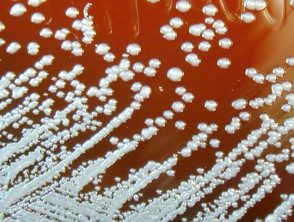Introduction
Melioidosis and glanders are infectious diseases caused by species of the bacterial gender Burkholderia. These infectious diseases differ in geographic range and ecology.
What is glanders?
Glanders is a rare and sporadic disease caused by bacterium Burkholderia mallei (This bacterium has been known by a variety of other names, such as Pseudomonas mallei, Actinobacillus mallei, Pfeifferella mallei, Malleomyces mallei, Corynebacterium mallei, Mycobacterium malleiand Bacillus mallei)
Glanders is primarily a disease of horses, although it can occur in other animals. It is rare now that horses are used less frequently for transportation, but it is sometimes seen in parts of Africa, Asia, the Middle East, and Central and South America. Infection with B. mallei It can occur in people in direct contact with infected animals. the bacteria enter the body through a skin abrasion or through the mucous membrane surfaces of the eyes, nose and respiratory tract. Cases of person-to-person transmission have rarely been reported. Glanders can be fatal, and is considered a potential biological warfare agent because it is highly infectious due to inhalation.
Glanders is also known as farcy and malleus.
Who gets glanders?
Anyone who works closely with infected animals (mostly horses) or their tissues, especially horses, is at risk of glanders: veterinarians, steady hands, laboratory workers, butchers, and slaughterhouse workers.
How are glanders acquired?
B. mallei is a hostderivative adapted from B. pseudomallei, the cause of melioidosis. B. mallei bacteria are transmitted to humans and animals by contact with infected horses and other animals through skin abrasions, mucous membranes, or inhalation of contaminated dust. Transmission from person to person is rare.
What are the clinical characteristics of glanders?
the incubation The glander period is 1 to 14 days after infection. The clinical presentation will depend on the mode of entry and is similar to that of melioidosis. Symptoms common to all forms include fever, sweating, muscle pain, chest pain and headache.
Located infection
Localized infection is characterized by cutaneous inflammation with ulceration at the site of entry (a cut or scratch on the skin).
- Lymphangitis (a red stripe that follows the nearby lymph nodes) develops and swollen lymph nodes or abscesses may also develop.
- Infection involving mucous membranes (eyes, nose, or respiratory tract) will cause excessive mucus production at those sites.
- The nasal pulp and the palate can be destroyed by infection.
- The lymph nodes in the neck are enlarged, giving rise to the name glanders (from French, glandres)
- Fever, discomfortand headache can occur.
- Systemic The infection can affect the lungs, spleen, liver, and other tissues.
Pulmonary infection
Glanders can cause pneumonia, lung abscesses and pleural effusion due to direct inhalation or bloodborne spread.
- The symptoms are cough, chest pain, and shortness of breath.
- There may be non-specific symptoms such as fever, headache, sweating, and muscle pain.
- Skin abscesses can develop several months after inhalation of the organisms.
- If left untreated, the lung infection is likely to progress to septicemia.
Bloodstream infection (septicemia)
In glanders septicemia:
- Skin lesions - papules, pustulesblisters ulcersand abscesses can occur
- Multi-organ systems can be affected and cause abscesses and organ failure.
- Death generally occurs within 10 days.
Chronic infection
Multiple abscesses can develop due to glanders in the liver, spleen, lungs, skin, or muscles.
- The symptoms are less severe than those described in acute infection.
- Chronic infection is reported to persist for up to 25 years in some cases.
What are the complications of glanders?
Systemic infection can lead to multiple organ failure and death.
How is glander diagnosed?
The diagnosis of glanders is confirmed by culture of blood sputumor other infected sites.
Be sure to inform the laboratory of the suspected or confirmed diagnosis.
Burkholderia mallei in culture

Burkholderia mallei in culture
Credit: PIXNIO.
Which is the differential diagnosis for glanders?
Differential diagnoses for glanders include any infectious disease that causes fever, headache, muscle pain with pneumonia, abscesses, or skin involvement. These illnesses include:
- Tuberculosis
-
Staphylococcal disease with septicemia
- Invader Klebsiella infection
- Anthrax
- Tularemia
- Cat-scratch disease
- Melioidosis
-
Plague.
What is the treatment for glanders?
Since it is a bacterial infection, antibiotics are the basis of glanders treatment. Since infection is rare in humans, there are currently no evidence-based treatment guidelines, but a treatment approach similar to that recommended for melioidosis should be adopted.
Glander prevention
There is currently no vaccine available for glanders. Prevention involves identifying and eradicating the infection of animals in endemic areas and appropriate use of personal protective equipment in the healthcare setting and those dealing with potentially infected animals.
What is the result of glanders?
Glanders had a high mortality rate in the pre-antibiotic era, but there have been few human cases since the introduction of antibiotics. The results for glanders are expected to be similar to those observed in melioidosis.

